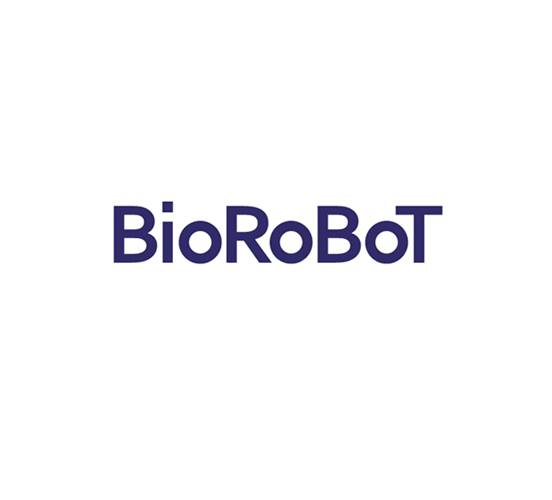The word ‘robot’ evokes images of manna-like manmade metallic machine (humanoid) designed and programmed to automatically perform some tasks for us. However, robots (or bots) can be of any shape or size and can be made of any material (including biological materials such as living cells) depending on design and functional requirements. It may not have any physical form as in the case of Siri or Lesblinda. Vélmennin eru skynsamlega hönnuð gripir eða vélar sem sýna sjálfræði og framkvæma ákveðin verkefni.
Biological robots (or biobots) use living frumur or tissues as fabrication material. Like all robots, biobots also are programmable machines, display autonomy and perform specific tasks. These are a special class of active living and motile synthetic structures.
Lifandi vefirnir í sjálfu sér, are not robots. They are parts of animals. The living frumur become robots when they are liberated from the normal constraints and programmed into desired form and function by artificially combining and shaping the cells to display specific behaviour.
xenobots voru fyrstu líffræðilegu lífrænu lífverurnar sem voru búnar til á rannsóknarstofunni árið 2020 með því að nota eggfrumur úr fósturvísum froskategundar sem kallast Xenopus laevis (þess vegna nafnið Xenobots). Það var fyrsta lifandi, sjálf-viðgerða, sjálf-afritunar gervi lífvera. Lifandi frumurnar voru notaðar sem byggingareiningarnar sem losnuðu undan eðlilegum takmörkunum afgangsins af fósturvísinum til að skapa nýtt form gervilífs þar sem formgerð og eiginleikar voru tilbúnar „hönnuð“. Xenobot var því lifandi tilbúið lífvera. Þróun Xenobots sýndi fram á að frumur unnar úr froskdýrafósturvísi er hægt að forrita í æskilegt form og virkni með því að losa um náttúrulegar takmarkanir. Hins vegar var ekki vitað hvort hægt væri að búa til lífrænar frumur úr frumum sem ekki eru froskdýr eða fullorðnar.
Scientists have now reported successful construction of biobots using adult cells from non-embryonic manna tissue with capabilities beyond Xenobots. This biobot has been named ‘Mannvélmenni’ because of its manna uppruna.
Since Xenobots were derived from amphibian embryonic cells by moulding cells individually, the research team began with testing if ability to give rise to biobots is limited to these amphibian cells or, other non-amphibian, non-embryonic adult cells also can generate biobots? Further, if the seed cells need to be necessarily sculpted individually to generate biobots or if coaxing of initial seed cells also can lead to self-construction of biobots? For this, instead of embryonic tissues, the researchers used adult, somatic cells derived from manna lung epithelium and were able to generate novel, multicellular, self- constructing, motile living structures without manual sculping or using any external form-giving machinery. The method used is scalable. Swarms of biobots in parallel were produced which moved via cilia- driven propulsion and lived for 45–60 days. Interestingly, it was also observed that Anthrobots moved across breaks in neuronal monolayers and induced efficient healing of defects in vitro.
Nýmyndun Anthrobots is significant because it demonstrates that plasticity of cells to give rise to biobots is not limited to embryonic or amphibian cells. It has shown that adult somatic manna wild cells without any genetic modification can form novel biobots without any external form-giving machinery.
Anthrobots er framför á Xenobots og framfarir í viðeigandi tækni sem hefur veruleg áhrif á framleiðslu á flóknum vefjum til klínískra nota í endurnýjandi lyf. Í framtíðinni gæti orðið mögulegt að framleiða Anthrobots sérsniðin fyrir hvern sjúkling og koma þeim fyrir í líkamanum án þess að framkalla ónæmissvörun.
***
Tilvísanir:
- Blackiston D. et al 2023. Biological Robots: Perspectives on an Emerging Interdisciplinary Field. Mjúk vélfærafræði. ágúst 2023. 674-686. DOI: https://doi.org/10.1089/soro.2022.0142
- Gumuskaya, G. et al. 2023. Motile Living Biobots Self-Construct from Adult Human Somatic Progenitor Seed Cells. Advanced Science 2303575. published: 30 November 2023 DOI: https://doi.org/10.1002/advs.202303575
- Tufts University 2023. News – Scientists Build Tiny Biological Robots from Human Frumur. https://now.tufts.edu/2023/11/30/scientists-build-tiny-biological-robots-human-cells
- Ebrahimkhani Mo.R. og Levin M., 2021. Synthetic living machines: A new window on life. iScience sjónarhorni. 24. bindi, 5. tölublað, 102505, 21. maí 2021. DOI: https://doi.org/10.1016/j.isci.2021.102505
***






































